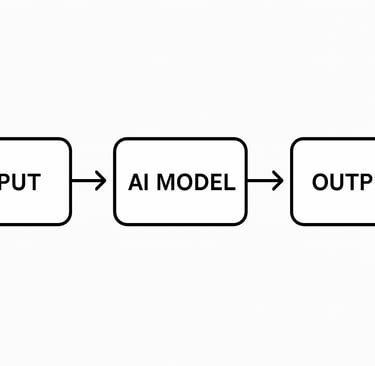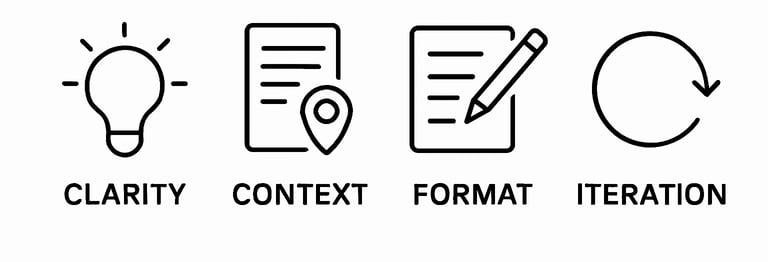Getting Started with AI Prompting: A Beginner-Friendly Introduction
As artificial intelligence (AI) becomes increasingly integrated into our daily lives, learning how to interact effectively with AI systems is a valuable skill. One of the primary ways we communicate with these systems is through prompting. In simple terms, prompting refers to the way we instruct AI to generate specific outputs based on our inputs. This blog post provides a beginner-friendly overview of AI prompting, why it matters, and how you can start using it effectively today.
BEGINNER'S GUIDESAIPROMPTING
Melissa AF Harmon
6/2/20252 min read
AI prompting involves giving an AI model a carefully crafted input to guide it in producing a relevant and useful response. Whether you're asking for help with writing, research, coding, or brainstorming, the way you frame your request significantly impacts the quality of the AI’s reply.
What is AI Prompting?
When done well, prompting helps you get accurate and contextually appropriate responses from AI. Without a clear prompt, AI might generate answers that are too general, off-topic, or not helpful. As a result, good prompting can transform your interaction from frustrating to productive.
Why Prompting Matters
AI models like ChatGPT or Claude analyze your input and generate responses based on patterns found in vast datasets. They do not understand your intent like a human would; instead, they rely on probability and context. Therefore, the clearer and more structured your input, the better the AI’s output.
How AI Models Respond to Prompts


Clarity: Be specific. Instead of asking, "Tell me about science," try, "Explain the theory of relativity in simple terms."
Context: Add background information. Saying "Write an email" is vague, but "Write a formal thank-you email to a client" gives the AI useful direction.
Format: Use structured prompts. Asking for a list, steps, or a summary helps AI format the answer more effectively.
Iteration: Refine your prompts. You may need to rephrase or add detail to improve the AI's response over time.
Four Principles for Better AI Prompts


Direct vs. Indirect Prompts: Use direct prompts for concise answers and indirect ones for broader exploration.
Open-Ended vs. Closed-Ended Prompts: Open-ended prompts work well for discussion and creativity, while closed-ended prompts aim for specific answers.
Role-Based Prompts: Assign a role to the AI for more tailored responses (e.g., "Act as a financial advisor...").
Example-Based Prompts: Provide a sample to guide tone or structure (e.g., "Write a paragraph in this style...")
Types of Prompts to Explore
Being too vague: General questions often produce generic answers.
Ambiguous instructions: Conflicting or unclear prompts confuse the AI.
Assuming accuracy: AI can make mistakes—fact-check when necessary.
Not experimenting: Try different phrasing to find what works best.
Common Mistakes to Avoid


Writing Help: Draft introductions, summarize topics, or revise text.
Research Assistance: Summarize articles or explain complex concepts.
Coding Support: Generate snippets, debug, or explain programming logic.
Practical Uses for Prompting
AI prompting is a foundational skill that empowers users to work more effectively with modern AI tools. By focusing on clarity, context, structure, and refinement, anyone can begin crafting prompts that yield meaningful, actionable responses.
If you're ready to take your prompting skills to the next level, consider exploring our comprehensive guide. Available now in our store, it offers in-depth techniques, examples, and practice tips to help you become an AI prompting expert.
Melissa AF Harmon Creative, LLC
Simplifying systems for creative entrepreneurs and educators.
© 2025. All rights reserved.
